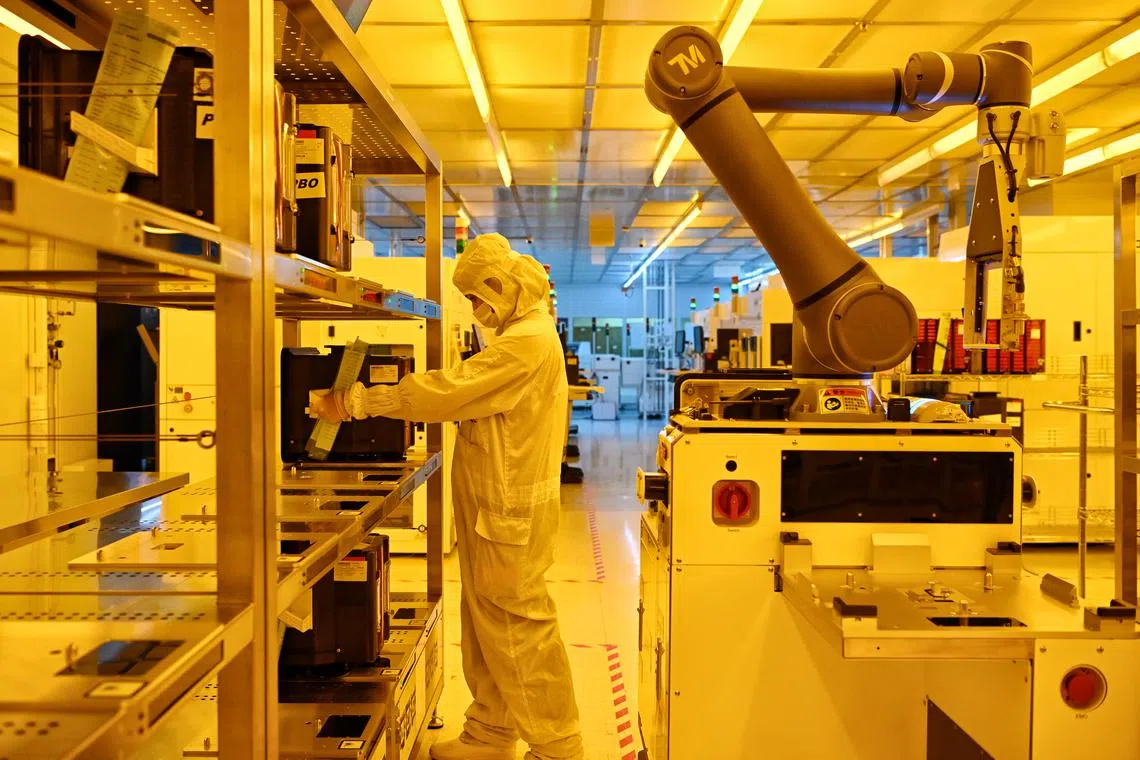S’pore’s factory output decline narrows to 1.6% in April despite drag from biomed, electronics sectors
Sign up now: Get ST's newsletters delivered to your inbox

Manufacturing production fell 1.6 per cent in April over the same month in 2023, a striking improvement over the 9.2 per cent tumble registered in March.
PHOTO: ST FILE
Follow topic:
SINGAPORE – Factory output continued to slide in April but the rate of decline – while worse than analysts’ forecasts – was markedly less than the big drop recorded in March.
Manufacturing production fell 1.6 per cent in April over the same month in 2023, a striking improvement from the 9.2 per cent tumble the sector registered in March.
It has been a bumpy period for the sector: It recorded 12 straight months of decline up to October 2023 and only four months of gains in the period since.
If the biomedical cluster is excluded, output in April actually rose 1.7 per cent year on year, Economic Development Board data showed on May 24.
The biomedical cluster fared the worst, shrinking 29.1 per cent in April, due largely to the pharmaceuticals segment, which plunged 54.6 per cent on the back of lower output for products and a different mix of active pharmaceutical ingredients.
The cluster’s decline came despite a 13.6 per cent increase in the medical technology segment on the back of higher export demand for devices.
The electronics cluster slid 1.1 per cent year on year. While parts of the cluster expanded, they were unable to offset the 2.6 per cent contraction in semiconductors, which account for the bulk of Singapore’s electronics output.
On the flip side, all the remaining sectors expanded, led by transport engineering, which appeared to fire on all cylinders, with output climbing 10.6 per cent.
The marine and offshore engineering segment stood out in the transport engineering sector with production surging 18.8 per cent, supported by improved activity in the shipyards, as well as increased output in oil and gas field equipment.
Aerospace fared well too, with output up 8.2 per cent amid higher demand from commercial airlines as travel demand worldwide continued to recover strongly. Only the land segment contracted, down 3 per cent.
Output also expanded in general industries, which grew 7.3 per cent; chemicals, up 3.1 per cent; and precision engineering, ahead 2.9 per cent.
Economists told The Straits Times that the weakness in semiconductor manufacturing was unexpected.
Essec Business School’s Associate Professor Jamus Lim said: “Indeed, I am a little surprised by the downturn in electronics.
“This is especially in the light of how we appear to have passed the trough... some time at the end of last year.”

OCBC Bank chief economist Selena Ling said while the cluster’s trajectory may remain bumpy in the near term, she expects a global recovery in the latter half of 2024.
“Coupled with the global soft landing narrative, it should benefit the domestic manufacturing sector,” she noted.
DBS Bank economist Chua Han Teng expects electronics output to benefit from “the ongoing global tech upturn”, with demand likely to be underpinned by “the replacement of smartphones and PCs, as well as the broadening use of artificial intelligence applications”.
Recent data and the optimistic responses in a business expectations survey appeared to corroborate this trend, he added.


